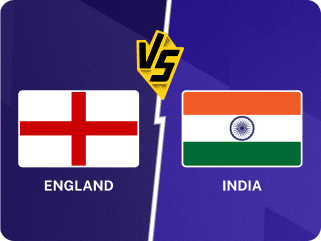
The 2010s was an unsettling period for grassroots cricket, as a widely reported downturn in participation between 2013 and 2014 caused shockwaves. Throughout the decade, friendly and Sunday cricket wilted in many areas, while league cricket was indecisive in nailing down desired formats and playing conditions. Volunteering and succession planning became pressure points, while complaints about poor on-field behaviour became more commonplace.
Many forces – from inside and outside the boundary rope – influence participation but solving the game’s formatting issues must be a primary objective in the 2020s. “There’s huge pressure to sustain participation in league cricket,” says Simon Prodger, managing director of the National Cricket Conference. “Ultimately, league cricket will be almost entirely overs format [rather than time]. The appetite for all-day cricket will diminish; encouraging core cricketers to play 12-15 league matches in an all-day environment is unsustainable. I envisage league cricket becoming coloured clothing, white ball, 50 overs. We’re already seeing a shortening of overs further down the structure, which will become commonplace. Red-ball cricket will be a thing of the past.”
Despite the challenges club cricket faces, Ian Guppy, a NatWest OSCA winner who plays for Aldwick CC, is upbeat. “In five or 10 years’ time we’ll see an uprising in club cricket because All Stars Cricket has flourished… as long as we can retain them through their teenage years.” That’s the game’s biggest drain, and there are few signs that the governing body or individual clubs are any closer to resolving a problem which is affecting sport in general.
Time is at the crux of cricket’s constant fight to maintain its identity and increase its profile. The game’s leisurely tempo can reveal character and colour like no other, but it is increasingly seen as a barrier. While an injection of youthful volunteers is required, grassroots cricket will continue to regenerate, come what may. It might not always be the most proactive sport, but, as Prodger says: “Recreational cricket has this great ability to swing in the breeze and adjust itself.”
As we begin a new decade, Rich Evans asks figures in the club game to look into their crystal balls and predict what grassroots cricket could look like in 10 years’ time.
The ECB’s ambitious proposals outlined in the 2020-2024 Inspiring Generations strategy suggest the game is entering a phase of sharp revolution – one that could see the traditional and modern cricketer become increasingly detached. Can clubs exploit the fruits of English cricket’s annus mirabilis in 2019 and convert the All Stars generation into fully-fledged clubbies? Will The Hundred be seamlessly translated to the grassroots game? And will we end the new decade in a position of strength or weakness?
“Kids love the game, it’s over in 90 minutes and it’s more accessible for people who don’t have time for outdoor cricket.”
✍️ @Rich_Wisden investigates the world of indoor cricket.https://t.co/iX7h1GSiPE
— Wisden (@WisdenCricket) January 11, 2020
***
A brand-new format, All Stars Cricket and the World Cup legacy are potential vehicles for growth, but Prodger remains cautious, particularly with regards to The Hundred, insisting most clubs don’t have room in their fixture card for two shorter formats. “I personally don’t see a long shelf life for The Hundred,” he adds. “I don’t think it’s a format that clubs will adopt. T20 is too strong a brand. Whatever the shortest format of the game is, I don’t see it challenging the longer form on a Saturday.” To which most readers – certainly this writer – will breathe a sign of relief.
Phil Mist, chairman of Bicester & North Oxford CC, agrees. “I don’t see much desire for The Hundred – most players say, ‘What the hell are we doing that for?’ – or worse. We already have a short version, along with 50 overs – why would we want another competition?” It’s a question raised in many a clubhouse.
However, there’s a growing expectancy – although there is distaste among many club cricketers – that short-form cricket will play a more central role going forward, especially in the lower echelons. Sundays, when many grounds are left unused, is a prime opportunity to build a short, social, family-orientated spectacle, with girls, women and developing juniors playing a key part.
Martin Croucher, chairman of St Ives & Warboys CC, believes short formats could even dovetail with the lengthier version on a Saturday. “I think we’ll see a mixture of the 50-over and 20-over games within a particular league, combining both within a league season – perhaps on alternating Saturdays. You might have two T20s on the same day.”
***
“The teenage drop-off will continue to be a big issue over the next decade,” says Croucher, “though T20 or The Hundred could help. If juniors are playing adult cricket when they’re in the under 13s, they’ll likely continue playing senior cricket. If they’ve not made that transition before their last year of junior cricket at under 15s then they’ll probably stop playing completely. It’s great to see so many girls playing All Stars. I think we’ll see more girls through All Stars than boys. Girls coming into senior cricket will probably be the biggest change over the next 10 years.”
The ECB is placing its faith in females swelling club cricket’s ranks. “My vision for the next decade is that we have thriving club and cricket communities reflective of modern England and Wales,” says Nick Pryde, the ECB’s director of participation and growth. “A girl is just as likely to pick up a bat and ball as a young boy; when people turn up to clubs, they’re even more impressive and welcoming. We’ve got a volunteer base no longer performing two-and-a-half roles each; we’ll spread the workload, say thank you and reward them in a way that’s powerful and genuine.”
It’s a beautiful vision, and a bold one. Richard Langdon, who recently scooped a NatWest OSCA after helping double participation among Falkland CC’s juniors, women’s and All Stars programmes, predicts: “Over the next handful of years Falkland will have a significant number of talented girls appearing in men’s senior cricket – a couple of whom are already playing. As they get stronger, we’ll start to field mixed teams. You’ve got all the complexities and logistics with the demand for separate changing rooms, but we’ll have a number of girls deserving a place in first- and second-team senior cricket.”
Think you know your stuff? Prove it here and some prizes could be coming your way…https://t.co/6AyNevcEoF
— Wisden (@WisdenCricket) January 8, 2020
Improving facilities is central to the ECB’s new strategy. Ahead of the 2019 World Cup £1.9m was invested in digitisation and improving catering facilities, so clubs could open their doors for the grand event. “The average age of a cricket pavilion is 52, so it’s imperative we ensure facilities are modern, up to standard and safe,” adds Pryde, who is also skipper of Teddington CC. “We’re trying to grow the game, but you must underpin that with sustainable initiatives – whether that’s facilities, volunteering, coaching. You can create the big bubble of kids entering the game but if you don’t support the cricket family to sustainably grow, we’ll create a bubble that bursts in a few years’ time.”
Prodger questions whether the female game, largely played on a Sunday, can truly flourish alongside increased challenges for non-asset-owning clubs, as councils continue to reduce maintenance on playing fields. “There is so much demand on club grounds from existing traditional and junior cricket that women are finding it really difficult to get game time on home pitches. If that’s not resolved, I can’t see women’s cricket growing into an individual entity.”
A potential solution is to convince private schools to maintain and open up their cricket grounds throughout the summer holidays.
In this month’s Club Debate @Rich_Wisden finds out what has gone on to lead to the abandonment of The Tees Herts & Essex Cricket League.https://t.co/xfPwMch4li
— Wisden (@WisdenCricket) November 26, 2019
***
Many grassroots cricket leagues have undergone restructuring in recent years; some choosing to amalgamate into one big county pyramid structure, such as the Sussex Cricket League, while others have opted to form smaller, more localised leagues. A movement towards the latter is possible, alongside a resurgence in friendly and wandering cricket, as smaller clubs fail – or are unwilling – to compete with the big boys. In any case, Prodger believes the number of clubs will decline.
“There are many dynamics when it comes to a club’s survival,” he says. “We’re beginning to see metropolitan leagues building multi-XI clubs because more people are moving to cities and away from rural environments, so I think we’ll see the number of clubs shrinking over the next 10 years. You’ll see a continued growth in the size of clubs in a metropolitan environment, at the expense of other clubs who will fold or merge. In Herts, we have too many clubs to sustain going forward.
“Clubs with lower XIs will find it increasingly difficult to find a second ground, because councils are continuing to reduce ground maintenance and services, so grounds will disappear. The consequence will be smaller clubs falling out of a larger league structure and forming a smaller league in a geographical sense.”
Croucher, who has overseen a club merger between St Ives CC and his beloved Warboys CC, believes pooling local assets and resource will be more commonplace by 2030. “You’ll see more ground sharing as facilities are increasingly at a premium – and also club mergers, which you’ll see more of to spread the burden and costs and maintain participation.”
***
Read more club cricket stories
First published in issue 28 of Wisden Cricket Monthly. Illustration by Joe Provis







